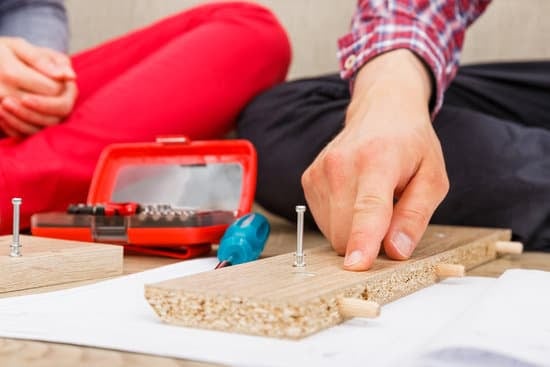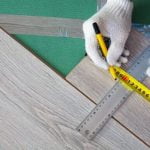In today’s connected world, having a strong mobile reception in the home is crucial for seamless communication and uninterrupted online activities. Whether it is making calls, browsing the internet, streaming videos, or accessing various applications, a reliable mobile connection is essential. This article will dive into the importance of having good mobile reception in the home and provide insights on how to improve it.
A strong mobile reception brings convenience to our daily lives by ensuring clear voice calls, fast data speeds, and consistent network availability. With more and more people relying on their smartphones as their primary means of communication and information, a weak signal can be frustrating and even detrimental in certain situations. It can affect simultaneous activities like video conferences or online gaming and impact productivity for remote workers or students studying from home.
Understanding the factors that can impact mobile reception at home is crucial to finding effective solutions. Factors such as distance from cell towers, building materials used in the home’s construction, and surrounding infrastructure all play a role in determining signal strength. These factors can vary greatly between urban and rural areas due to different network infrastructures and coverage maps.
In order to address mobile reception issues effectively, it is important to conduct a thorough assessment of your current situation. By measuring signal strength and network availability using tools or mobile apps specifically designed for this purpose, you can gain an accurate understanding of the problem areas within your home.
Only then can you take steps towards choosing the right mobile carrier and plan, optimizing your Wi-Fi network setup, utilizing external antennas or signal boosters if necessary, making structural adjustments to improve reception, troubleshooting common issues that may arise along the way.
By implementing these strategies discussed throughout this article series, you will be able to enjoy improved mobile reception in your home – no more dropped calls or slow data speeds. So let’s dive into each step in detail so you can boost your mobile experience right from where it matters most: your own living space.
Understanding the Factors that Impact Mobile Reception at Home
Having a strong mobile reception in the home is important for seamless communication, online browsing, and other daily activities. However, there are various factors that can hinder mobile reception and understanding these factors can help in improving the overall signal strength.
One of the key factors that impact mobile reception is the distance from cell towers. The further away you are from a cell tower, the weaker your signal will be. This is especially true in rural areas where cell towers may be located far apart. On the other hand, urban areas tend to have a higher concentration of cell towers, which can improve signal strength.
Another factor to consider is the building materials used in your home. Certain materials like concrete and metal can block or weaken cellular signals, resulting in poor reception. Additionally, infrastructure within buildings such as thick walls or multiple floors can also affect signal strength.
To assess your current mobile reception at home, you can use tools or mobile apps that measure signal strength and network availability. These tools will provide you with a clear indication of how strong or weak your mobile reception is in different areas of your home.
Understanding these factors will allow you to make informed decisions on how to improve mobile reception in your home. Whether it’s considering external antennas and signal boosters or making structural adjustments, taking these factors into account will help you enhance your mobile reception experience.
Conducting a Mobile Reception Assessment in Your Home
To improve mobile reception in your home, it is important to conduct a thorough assessment of your current signal strength and network availability. By identifying the areas with weak or no coverage, you can then work on finding the most effective solutions. Here are some steps to consider when conducting a mobile reception assessment in your home.
- Check signal bars: Begin by simply checking the signal bars on your mobile device in different areas of your home. This will give you a basic understanding of the variation in signal strength throughout your space.
- Use mobile apps or tools: There are various mobile apps and online tools available that can provide more detailed information about your mobile reception. These tools typically show you accurate signal strength readings, as well as other relevant details such as cell tower locations and network availability.
- Consider different carriers: It is also worth testing out different carriers’ signals within your home, especially if you have multiple networks available in your area. This will help determine if changing carriers would significantly improve your mobile reception.
- Identify problem areas: During the assessment, pay attention to specific areas where there is consistently poor signal or frequent dropped calls. This will help you pinpoint locations that require additional intervention.
Once you have completed the mobile reception assessment in your home, you can move on to implementing specific strategies to improve mobile reception based on the identified problem areas.
Choosing the Right Mobile Carrier and Plan for Improved Reception
In order to improve mobile reception in your home, it is important to choose the right mobile carrier and plan. This section will discuss the factors to consider when selecting a mobile carrier and highlight the significance of choosing a plan with suitable data and voice coverage for your specific needs.
- Selecting the Right Mobile Carrier based on Coverage Maps: When choosing a mobile carrier, it is essential to check their coverage maps. These maps provide an overview of the areas where their network offers strong signal strength and reliable service. Look for carriers that have good coverage in your area to ensure better reception at home.
- Considering Customer Reviews: Reading customer reviews can give you insights into the overall quality of service provided by different carriers. Keep an eye out for any recurring complaints related to poor reception or dropped calls, as these could indicate potential issues.
- Examining Network Infrastructure: The infrastructure and technology used by a mobile carrier can significantly impact its network performance. Consider carriers that have invested in advanced technologies like 4G or 5G networks, as these are more likely to provide faster speeds and better coverage.
Choosing the Right Plan:
- Assessing Data and Voice Coverage: Evaluate your data and voice usage patterns to determine the amount of coverage you require. If you frequently make calls or use cellular data extensively, opt for plans that offer unlimited voice minutes or high data limits.
- Understanding Roaming Policies: If you travel frequently or live in an area with limited coverage, it is important to check a carrier’s roaming policies. Some carriers offer extended coverage through partnerships with other networks, which can be beneficial if you often find yourself in areas with weak reception.
- Considering Family Plans or Bundled Services: Many carriers offer family plans or bundled services that provide multiple lines under one account at a discounted rate. This can be advantageous if there are multiple users in your household who require good mobile reception.
When choosing the right mobile carrier and plan, take your time to research and consider all the factors that are important to you. By doing so, you will be able to enjoy improved mobile reception in your home and a more satisfying overall mobile experience.
Optimizing Your Home’s Wi-Fi Network for Better Mobile Reception
The Relationship Between Wi-Fi and Mobile Reception
When it comes to improving mobile reception in your home, optimizing your Wi-Fi network can play a crucial role. Many people might wonder how Wi-Fi is connected to mobile reception. Well, the truth is that a strong Wi-Fi network can indirectly enhance your mobile signal strength. This is because many modern smartphones are designed to utilize both cellular data networks and Wi-Fi networks for internet connectivity.
Tips for Optimizing Your Wi-Fi Network
If you want to enhance your mobile reception at home, here are some tips for optimizing your Wi-Fi network:
1. Router Placement: The placement of your router can greatly impact the overall signal strength in your home. Make sure to position it centrally so that the signal can reach every corner of your house.
2. Channel Selection: Interference from neighboring networks can negatively affect both Wi-Fi and mobile reception. By selecting channels with less interference, you can improve overall network performance.
3. Upgrade Equipment: If you have an older router or outdated equipment, consider upgrading to newer models that support higher speeds and offer more advanced features.
4. Wi-Fi Extenders or Mesh Networks: If you have areas in your home with weak Wi-Fi coverage, consider using Wi-Fi extenders or creating a mesh network system with multiple access points to ensure consistent coverage throughout.
The Benefits of Optimizing Your Home’s Wi-Fi Network
Optimizing your home’s Wi-Fi network not only helps improve internet speed and connectivity on your smartphones but also reduces the reliance on cellular data networks. This means that if you have a weak cellular signal in certain areas of your home, connecting to a strong Wi-Fi network will allow for faster browsing, seamless streaming, and better call quality through services like Voice over IP (VoIP).
By following these tips and optimizing your Wi-Fi network, you can enjoy a better mobile reception experience in your home and take full advantage of all the features and capabilities of your smartphones.
Utilizing External Antennas and Signal Boosters to Enhance Mobile Reception
Having a strong mobile reception in your home is essential for seamless communication, smooth online browsing, and other daily activities. However, if you are struggling with poor signal strength, there are solutions available to enhance your mobile reception. One effective way to improve your mobile reception is by utilizing external antennas and signal boosters.
External antennas are designed to capture weak cellular signals and amplify them for better reception. They can be mounted on the roof or exterior walls of your home to maximize signal strength. Signal boosters, on the other hand, work by amplifying existing cellular signals received by the external antenna and transmitting them within the coverage area of your home.
There are different types of signal boosters available on the market, including vehicle boosters, home office boosters, and commercial boosters. Each type caters to specific needs and coverage requirements. Before choosing a booster, it is important to consider factors such as the size of your home, the number of users, and the specific network frequencies used by your carrier.
When installing an external antenna and signal booster system, it is crucial to follow manufacturer guidelines and ensure compliance with local regulations. Improper installation can lead to interference or even legal repercussions. Additionally, regular maintenance is necessary to keep the system functioning optimally.
| Type | Installation Location |
|---|---|
| Vehicle Booster | In vehicles (cars, trucks) |
| Home Office Booster | In home offices and small areas |
| Commercial Booster | In large buildings and commercial spaces |
Making Structural Adjustments to Improve Mobile Reception at Home
When it comes to improving mobile reception in your home, sometimes structural adjustments may be necessary. The materials used in the construction of your home can significantly impact the strength and quality of your mobile signal. In this section, we will explore the impact of building materials on mobile reception and offer suggestions for making structural adjustments to improve your signal.
Certain building materials can effectively block or weaken cellular signals, resulting in poor mobile reception within your home. Materials like concrete, brick, metal, and energy-efficient windows can all pose challenges for receiving a strong signal. If you find that your home is constructed with these materials or others known to negatively affect mobile reception, there are steps you can take to improve it.
One option is to use signal-friendly materials when making modifications or renovations to your home. These materials include wood, plasterboard, and glass without any metallic coatings. By opting for these materials during any remodeling projects, you can help ensure that your mobile reception is not compromised.
Additionally, installing signal reflectors can help bounce signals into areas where they would otherwise struggle to reach. Reflectors can be as simple as using aluminum foil or special-purpose reflector panels strategically placed behind devices or in specific areas of your home where the signal is weakest.
By making these structural adjustments and choosing more signal-friendly materials during renovations or modifications, you can significantly enhance the mobile reception in your home. Remember that different homes may require different solutions depending on factors such as location and building materials used. It’s always a good idea to consult with professionals who specialize in improving signals and connectivity if needed.
Whether you live in an urban area with more cell towers or a rural area with greater distances between towers, taking steps to optimize the reception within your home will benefit you greatly in today’s connected world. In the next section, we will address common troubleshooting tips for dealing with issues related to mobile reception at home.
Troubleshooting Common Mobile Reception Issues at Home
Mobile reception issues can be frustrating and disruptive to our daily activities. In this section, we will discuss common problems that may arise when trying to improve mobile reception at home, as well as provide troubleshooting tips and solutions for each issue.
- Interference: Interference from electronic devices or appliances in your home can affect mobile reception. To troubleshoot this issue, try moving away from devices that may be causing interference, such as cordless phones, microwaves, or baby monitors. Additionally, ensure that your router is located away from other electronics to minimize interference.
- Dropped Calls: Dropped calls can occur due to weak signal strength or network congestion. To troubleshoot this issue, try moving to a different location in your home where the signal is stronger. You can also reset your network settings on your mobile device or contact your mobile carrier for assistance.
- Slow Data Speeds: Slow data speeds can be caused by various factors such as network congestion or insufficient bandwidth. To troubleshoot this issue, try connecting to Wi-Fi instead of relying on cellular data if possible. You can also try closing unused apps running in the background or clearing the cache on your mobile device.
- No Signal: If you’re experiencing no signal at all in certain areas of your home, it could be due to distance from cell towers or obstructions like buildings or trees blocking the signal. Troubleshooting steps include checking if there are known network outages in your area and contacting your mobile carrier for assistance.
- Network Compatibility: Sometimes compatibility issues can affect mobile reception, especially if you’re using an older device or have recently switched carriers. Make sure that your device supports the frequencies and technologies used by your chosen carrier.
By following these troubleshooting tips and solutions, you can effectively address common mobile reception issues at home and enjoy a better connectivity experience overall. Remember that working with your mobile carrier’s customer service team can also provide valuable assistance in resolving any persistent issues you may encounter.
Conclusion
In today’s connected world, having a strong mobile reception in the home is essential for seamless communication and online browsing. Throughout this article, we’ve discussed various factors that can impact mobile reception and provided guidance on how to improve it. Now, armed with the knowledge and tools necessary, you can take the necessary steps to enjoy a strong mobile reception in your home.
Firstly, conducting a mobile reception assessment in your home is crucial to understanding the current state of your signal strength and network availability. By using tools or mobile apps that measure signal strength, you can identify areas in your home where coverage may be weak and take steps to address them.
Choosing the right mobile carrier and plan is also key to improving reception. Take into account coverage maps, customer reviews, and network infrastructure when selecting a carrier. Additionally, consider your specific data and voice needs when choosing a plan that provides suitable coverage for your usage.
Optimizing your home’s Wi-Fi network can significantly improve your mobile reception as well. Consider router placement, channel selection, and upgrading equipment if needed to ensure a strong Wi-Fi connection throughout your home.
External antennas and signal boosters are valuable tools when it comes to enhancing mobile reception. Explore options appropriate for your situation and install them accordingly to amplify signals within your home.
Lastly, making structural adjustments such as using signal-friendly materials or installing signal reflectors can make a noticeable difference in improving mobile reception.
By implementing these suggestions for improving mobile reception in your home, you can enjoy uninterrupted communication, reliable internet access, and an overall enhanced experience with your mobile devices. Stay connected without frustration by taking action today.
Frequently Asked Questions
How can I improve my mobile signal strength at home?
Improving your mobile signal strength at home can be accomplished by taking a few steps. First, try moving closer to a window or going outdoors as the signal strength can be affected by obstacles such as walls and buildings.
Additionally, positioning your phone away from other electronic devices like routers and microwaves may help reduce interference. It may also be worth contacting your mobile service provider to inquire about a signal booster or femtocell, which are devices that can improve reception in specific areas of your home.
Why is my mobile reception so bad at home?
There can be various reasons why your mobile reception is bad at home. One common cause is the distance between your home and the nearest cell tower. The farther away you are, the weaker the signal tends to be.
Another factor is the construction materials used in your home, particularly if they contain materials that block radio waves like metal or thick concrete walls. Finally, environmental factors such as trees, hills, or even weather conditions like heavy rain or snowfall can impact signal strength.
How can I increase my mobile signal range?
Increasing your mobile signal range primarily involves two approaches: improving signal transmission from the network provider’s side and enhancing reception on your device’s end. To boost the network’s transmission capabilities, more cell towers could be built or existing towers could utilize advanced technologies such as 5G to extend coverage range.
On the user’s side, using an external antenna or signal booster can enhance reception and amplify weak signals from nearby towers. These devices are typically placed in strategic locations like rooftops or near windows to capture better signals for improved range.

I’m thrilled to have you here as a part of the Remodeling Top community. This is where my journey as an architect and remodeling enthusiast intersects with your passion for transforming houses into dream homes.





